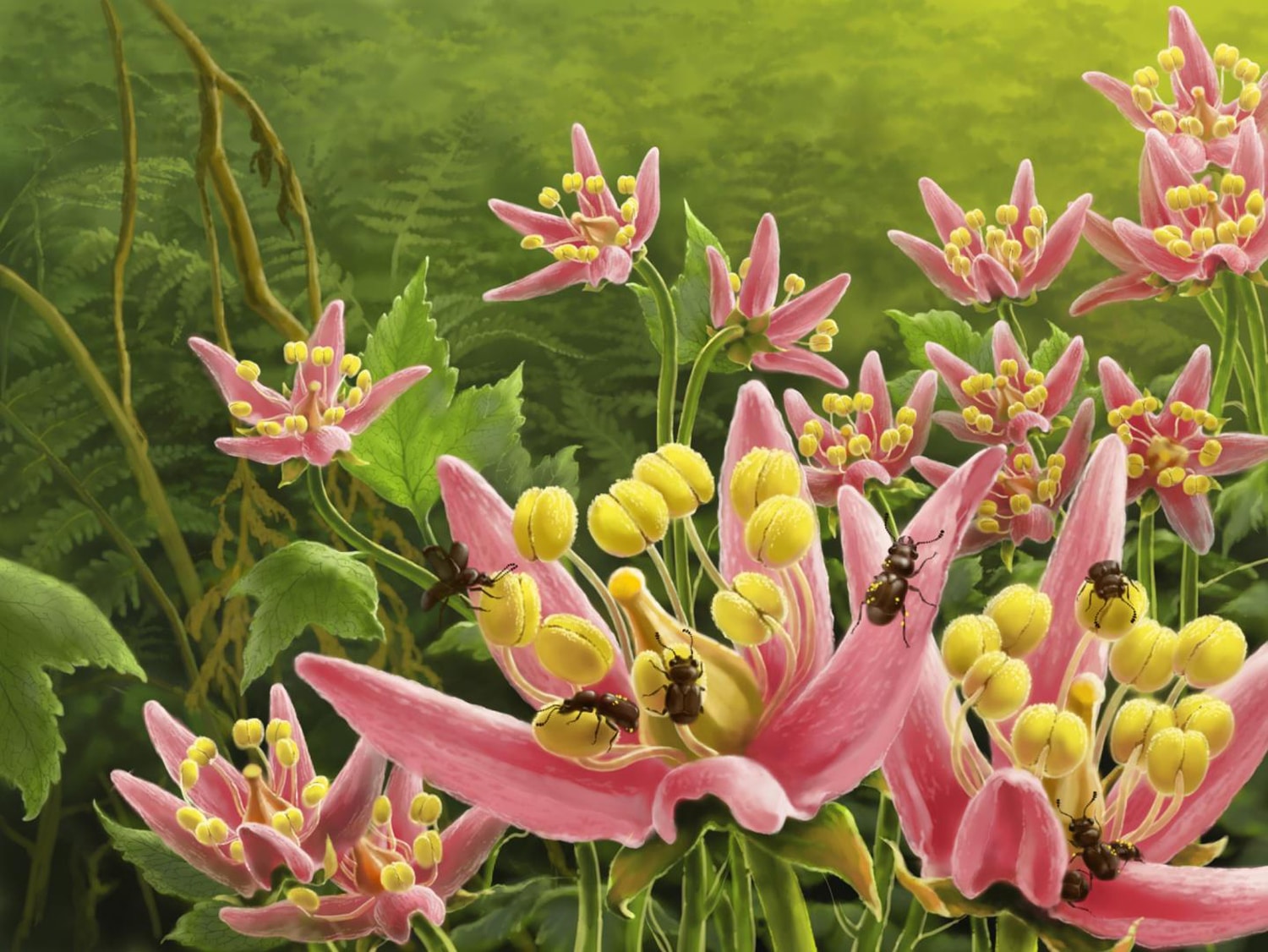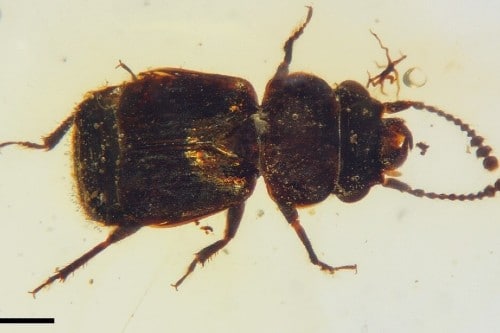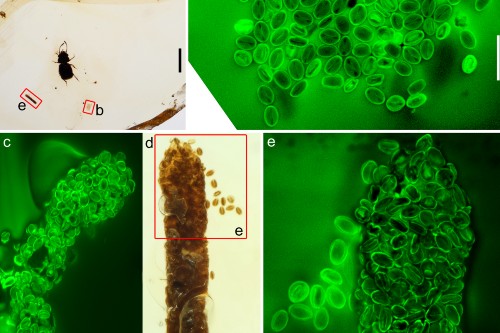
Despite the crucial significance of flower-visiting insects in current environments, there is little fossil evidence on the origins of angiosperm pollination.
Recently, scientists from the University of Bristol and the Nanjing Institute of Geology and Palaeontology of the Chinese Academy of Sciences (NIGPAS) unearthed an amber fossil of a Cretaceous beetle. Their study of the fossil fecal matter, which was composed solely of pollen, shed some light on the diet of one of the earliest pollinators of flowering plants.
Scientists named this fossil Pelretes vivificus. P. vivificus was a visitor of angiosperms – flowering plants. Scientists also found that P. vivificus also fed on their pollen.

The fossil lived in the Burmese amber rainforest some 98 million years ago. Its closest relatives are short-winged flower beetles (Kateretidae).
Professor Chenyang Cai, a paleontologist from the School of Earth Sciences and NIGPAS, said, “The beetle is associated with clusters of pollen grains, suggesting that short-winged flower beetles visited angiosperms in the Cretaceous. Some aspects of the beetle’s anatomy, such as its hairy abdomen, are also adaptations associated with pollination.”
Erik Tihelka, entomologist and paleontologist at the School of Earth Sciences, added: “The fossil is associated with beetle coprolites – fossil fecal pellets – that provide a very unusual but important insight into the diet of short-winged flower beetles in the Cretaceous. The fossil faecal pellets are completely composed of pollen, the same type found in clusters surrounding the beetle and attached to its body. We thus know that Pelretes visited angiosperms to feed on their pollen. This finding provides a direct link between early flowering plants in the Cretaceous and their insect visitors; it shows that these insect fossils were not just incidentally co-preserved with pollen, but that there was a genuine biological association between the two.”
“Cretaceous amber fossils provide an important source of evidence for understanding the biology of early angiosperms before they became the dominant group of plants on Earth. Amber is the fossil resin of ancient trees that often fortuitously trapped insects and other small organisms, preserving them with life-like fidelity.”

“Farmers who want to protect their orchards can set up sticky traps on trees to monitor insects. Now imagine if your only insight into an ancient ecosystem were such sticky traps, and you were to reconstruct all its ecological interactions based solely on this source of evidence. That is the challenge faced by paleontologists studying amber. Luckily, the amber trap from northern Myanmar is one of the riches fossiliferous amber deposits known. Besides the unparalleled abundance of fossil insects, the amber dates back to the mid-Cretaceous, right when angiosperms were taking off.”
Dr. Liqin Li, fossil pollen specialist from NIGPAS who contributed to the study, said, “The pollen associated with the beetle can be assigned to the fossil genus Tricolpopollenites. This group is attributed to the eudicots, a living group of angiosperms that includes Malpighiales and Ericales’ orders. “
Journal Reference:
- Tehelka, E., Li, L., Fu, Y. et al. Angiosperm pollinivory in a Cretaceous beetle. Nat. Plants (2021). DOI: 10.1038/s41477-021-00893-2
Continue reading A rare fossil uncovered last meal of prehistoric pollinator on Tech Explorist.
0 comments:
Post a Comment